With at least 400 hours of video uploaded to the site every minute, YouTube needs an effective way to ‘judge’ the quality of the video content so that they can return the most relevant results for a search query and/or recommended and suggested videos. There are a number of metrics and signals that YouTube’s platform takes into account. However, the number one ranking factor for YouTube as of late 2012 is “Watch Time.” Creating content that keeps the viewer hooked all the way through – and beyond – is now the most important factor in that video’s success.
A ‘Reel’ Comprehensive Guide to YouTube Watch Time
So what the heck is “Watch Time” exactly? How do you ensure that you are creating content that keeps viewers engaged with your channel? What should you be doing to help YouTube surface your video content so that it is easily discoverable by viewers? How do you make sure that your content is favored with Watch Time?
- A Brief History of YouTube’s Ranking Algorithm
- YouTube’s Most Important Ranking Factor – Watch Time
- What Exactly is YouTube Watch-Time?
- Tips to Optimize YouTube Watch Time
- How to Track Watch Time in YouTube Analytics
- How Watch Time Helped PewDiePie Conquer the World
A Brief History of YouTube’s Ranking Algorithm
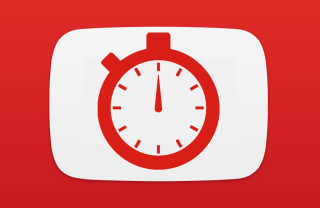 Up until 2012, view count was considered the primary measure of success for video content on YouTube. Videos were ranked according to, in-part, how many views they had accrued. In the past, a creator could upload a video with a spammy title and racy thumbnail with the intention of increasing clicks to that video’s watch page – which, would then lead to an increase in view count for that video.
Up until 2012, view count was considered the primary measure of success for video content on YouTube. Videos were ranked according to, in-part, how many views they had accrued. In the past, a creator could upload a video with a spammy title and racy thumbnail with the intention of increasing clicks to that video’s watch page – which, would then lead to an increase in view count for that video.
A video like this could see a large number of views, but a very low audience-retention and high bounce-rate which would instead indicate that the user was not satisfied with the search result or suggestion.
YouTube realized that view count alone is not a good indication for relevance or quality. Additionally, view count is something that is open to manipulation and abuse (e.g. buying YouTube views, Click Fraud etc..) Overall, how much time a viewer stays to watch a video is a far better measure of the videos’ relevance and the users’ level of satisfaction.
Let’s state the obvious here: YouTube is a business (duh!) and they make their money through advertising. So, it makes perfect sense that YouTube would want viewers to be more satisfied and remain on the site for as long as possible – so as to provide advertisers with quality inventory and to further establish YouTube as a daily viewing destination for video.
Session Watch Time – YouTube’s Number #1 Ranking Factor:
In October 2012, Google’s YouTube platform rolled out a brand new algo aimed at rewarding video content that really engaged viewers and kept them on YouTube for as long as possible. The new algorithm now favors videos that lead to greater Watch Time. In other words, video views ceased being the primary signal for YouTube to rank content two years ago.
YouTube confirmed the update by stating that:
“We’ve started adjusting the ranking of videos in YouTube search to reward engaging videos that keep viewers watching. The experimental results of this change have proven positive – less clicking, more watching. As with previous optimizations to our discovery features, this should benefit your channel if your videos drive more viewing time across YouTube.”
YouTube let a little light in on the magic to explain how the Watch Time metric benefits the searcher and the viewer, and how it is almost impossible to game:
What Exactly is YouTube Watch Time?
DISCLAIMER: I don’t work for YouTube and didn’t build their algorithm (If I did, I’d be on vacation). The following is my best understanding of how YouTube’s platform currently works and my best attempt to describe it. Lastly, though it’s the main factor, watch-time isn’t the only factor for SEO for YouTube. Therefore, a proper strategy involves working on all aspects of your video and channel to increase it’s value to users.
Watch Time IS:
Watch Time, according to YouTube, is “The amount of time in aggregate that your viewers are watching your videos…” And, according to the YouTube Creator Playbook,
“YouTube optimizes search and discovery for videos that increase watch time on the site”.
We’ll dive more into this – right after we talk about what it is NOT:
Watch Time IS NOT:
Watch-Time is NOT just a measure of how long, or what percentage of your video get’s watched. It’s more involved than that and so it’s not something that can or should be “gamed” Stretching a 30 second video into 20 minutes in the hope that viewers stick around to the very end and you’ll be rewarded with higher rankings is not a strategy with legs. If the viewer were to stick around and engage with the content before leaving the site, then YouTube may look on these actions favorably. BUT, only if the content additionally helped to “increase watch time on the site.”
So, what the heck does that actually mean? Well, there are a couple different things to consider when we’re talking about Watch-Time:
- Audience Retention & Estimated Minutes Watched (video or asset-specific):
How much time a viewer has watched a video(s), measured in actual minutes and seconds. We’ll talk about this later but Audience Retention is also closely related – which measures the average amount of time an individual viewer spends with your video(s). A high retention rate for an individual video is an excellent indicator of its ability to hold the viewers attention. Watch Time is more involved than just your video as YouTube is also watching to see how that video contributes to a user’s Watch-Time on YouTube. - Watch Time (viewer-specific) AKA Session Time:
High completion rates for individual videos are important. But for YouTube, Watch Time per user session is what YouTube is favoring in their algorithm. What does this mean? Well, again, YouTube’s goal is to keep viewers on YouTube and keep them satisfied.
[alert type=white ]Therefore, Watch Time is NOT simply how much of your video was watched, rather it is a measure of how much your video contributed to a users’ overall time watching videos on the site.[/alert]
Watch-Time Examples:
- For example, if a user does a search on YouTube and then watches a series of videos with yours being the first – every video that is watched in that series (whether it’s your video or someone else’s), will be factored into the session watch-time for that content. If they immediately bail and go back to perform another search, watch time will suffer.
- This is also true if your content creates a new YouTube viewing session. For example, what happens when an established YouTuber posts an update to their social media followers? Their influence will drive followers to YouTube to begin a viewing session and if those followers then watch other YouTuber videos, watch time is positively influenced. (see PewDiePie below)
7 Tips to Optimize YouTube Watch Time
While I know I’m repeating myself here – nowadays the algorithm that suggests videos gives priority to videos which drive a longer overall viewing session. If you’re making video content that engages users and gets them to watch beyond the first click, that video content should be favorably served.
#1 Create Engaging, Entertaining Content That Viewers Watch
“Yeah, Yeah, Yeah – I get it! Make quality content! Now what?”
But really, the cliche is true and if you consistently create and publish quality video, you will attract a loyal following in the form of subscribers. It’s a well-known fact that subscribers watch, engage with, and share more video that non subscribers, and so a strategy to build subscribers is one way to influence watch time.
Beyond creating great content, there are certain best practices and strategies that can help to further drive greater watch time.
#2 Create Playlists & Drive A Linear Viewing Experience
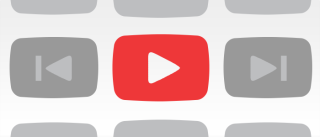 Creating playlists can help to guide potential viewers towards a more linear viewing experience whereby they may watch more of your content (or anyone else’s). This is one way that you can help to influence a users total Watch Time session.
Creating playlists can help to guide potential viewers towards a more linear viewing experience whereby they may watch more of your content (or anyone else’s). This is one way that you can help to influence a users total Watch Time session.
By organizing your videos into a meaningful sequence (relevant topics, events, series, shows, etc…), you make it easier for users to watch the next video in the session. This not only helps with Watch Time, but it gives you an added opportunity to surface in suggested video results on the watch page.
You can optimize these playlists using the Start and End Times feature in YouTube to specify “in” and “out” points for each video which creates a more seamless experience. For example, you may want to trim intros and outros from your playlists.
Also, be sure to feature your playlists wherever you feature your video content – On your YouTube channel page, embedded players, etc…
Lastly, when you link to other videos via annotations (which is strongly encouraged), link to the playlist page with the video instead of the single video watch page URL.
Read More -> How to Link Annotations to the Playlist Player
#3 Choose the Right Title and Thumbnail
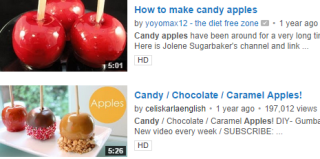 There is no doubt that a really great thumbnail and video headline can drive an enormous amount of views your way. These two things are critical for SEO, they’re within your control, and are usually the first thing that provides users with an indication as to the nature of your video.
There is no doubt that a really great thumbnail and video headline can drive an enormous amount of views your way. These two things are critical for SEO, they’re within your control, and are usually the first thing that provides users with an indication as to the nature of your video.
With Watch Time – It’s even more critical than ever that you use the best and most accurate, descriptive titles and thumbnails that you can. Poor thumbnails, or the wrong ones (i.e. boobs when there are no boobs involved) and generic or misleading titles may still attract clicks, but if the viewer decides within the first few seconds that they don’t like what they are seeing, they will leave (which BTW – is better than them staying and flagging it as misleading). This sends a low Watch Time signal to YouTube and videos which perform better will outrank yours. Be truthful from the get-go as there’s really no other option.
#4 Build Up Your YouTube Subscribers
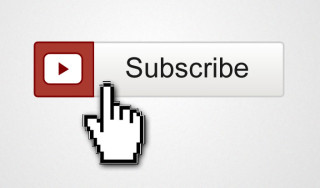 An active, engaged, and enthusiastic subscriber base will lead to a higher rate of accumulated Watch Time minutes almost from the moment you publish them. Subscribers have already bought into you, your brand, and your channel, and you’ll get a more committed response from these fans, and have a better audience retention rate than from viewers who have found you via the search results.
An active, engaged, and enthusiastic subscriber base will lead to a higher rate of accumulated Watch Time minutes almost from the moment you publish them. Subscribers have already bought into you, your brand, and your channel, and you’ll get a more committed response from these fans, and have a better audience retention rate than from viewers who have found you via the search results.
Don’t forget that you can solicit subscribers across the web by promoting your own YouTube channel subscribe button. Speaking of which – how about subscribing to ReelSEO’s YouTube Channel?
#5 Use Annotations to Keep the Viewer Engaged Throughout
Annotations are a great way to keep the viewer engaged 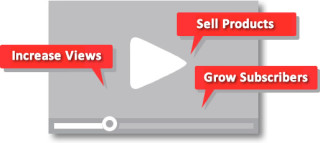 throughout the video. There are a number of ways of using them, but for Watch Time, the most relevant use for annotations is to link viewers to other content on YouTube which may be of interest to the viewer.
throughout the video. There are a number of ways of using them, but for Watch Time, the most relevant use for annotations is to link viewers to other content on YouTube which may be of interest to the viewer.
Although you can now link off-YouTube with Associated Website Annotations, keep in mind that once the viewer clicks and leaves YouTube, the session has ended. So, external linking is a bit of a juggling act. If you live without the need to drive viewers away from YouTube, you should.
#6 Create Interactive End Slates
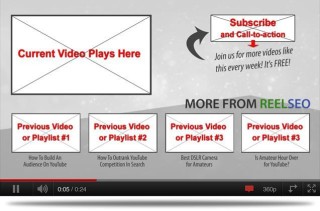 End Slates (or End Cards, Outros, End Screens, whatever ) are a very effective way to add awareness to other content. And, unless the video is being played on a mobile device, viewers will be able to easily click within your video to take action.
End Slates (or End Cards, Outros, End Screens, whatever ) are a very effective way to add awareness to other content. And, unless the video is being played on a mobile device, viewers will be able to easily click within your video to take action.
There are two important strategies for developing an end slate that can help to drive increased Watch Time. The most direct strategy is to extend the viewer’s time spent in that particular session through promoting other video content that they can then click on to watch. Additionally, though it will not directly lead to an increase in watch time for the session, adding channel subscription calls-to-action can help drive an increase in subscribers – which then leads to blah blah blah (you should know this by now).
How to Measure Watch Time Metrics in YouTube Analytics
Viewers, especially Millennials, are used to skipping about on YouTube with lightning speed and won’t tolerate misleading content, long-winded branded intros, or content that doesn’t get to the point within the first 15 seconds. You may be getting the views, but are viewers really that engaged with your content and are they staying on YouTube?
The YouTube Analytics Views Report, Audience Retention Report, and audience engagement reports will help you measure the performance of your video(s), playlists, and overall channel.
Video Views Report:
The Views report contains in-depth data about views and estimated minutes watched on YouTube, the embedded player, and the mobile app. The report highlights ‘Estimated Minutes Watched’ by video, location, and by date, and shows you which content viewers are sticking with, and which they are abandoning.
Audience Retention Report:
Absolute Audience retention: Views per moment as a percentage of video views. It’s critical that you pay very close attention to the first 15 seconds of each video. A high drop-off rate here would indicate that viewers are disappointed with your content and are leaving to watch someone else’s…
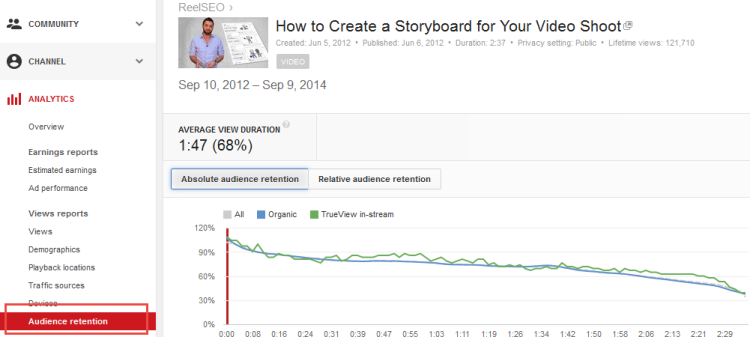
Relative Audience retention: How your video is faring in terms of retaining viewers during playback against video content of a similar length.
How Watch Time Helped PewDiePie Conquer the World
You don’t have to be a gamer to have heard of YouTube sensation PewDiePie. The 24 year-old Swede is the most successful video game commentator on the site, and is reported to be pulling in around $4 Million a year in advertising revenue. His channel is the most watched, and subscribed to, non-YouTube or music channel on YouTube, and his fame is spreading far beyond the confines of the walkthroughs he creates. There is no doubt that his brand works, but there are hundreds of thousands of other gamers doing the same thing, so how did he come to dominate?
PewDiePie consistently uploads multiple long-form videos, that his fans devour. They watch, watch some more, and then watch other content, either on his channel, or a related one. The Watch Time gets racked up, YouTube recognizes the intense level of engagement, pushes the channel via search and discovery, and suggested, and recommended channels, this in turn pushes up the views and visibility, which drives more fanatically engaged subscribers, who push up the channel’s Watch Time etc.
The following video explains how Watch Time helped PewDiePie to conquer YouTube, and the lessons that other creators can learn from his approach:
What Do You Think?
I sincerely hope that this article has helped to give you some insight into how YouTube’s algorithm works. Again, it’s not a simple measurement and it’s YouTube’s intellectual property. So, clearly there are much deeper questions that remain unanswered for now, like:
- If a viewer watches 6 videos to completion or near-completion in a session, is only the first video favored, or are equal amount of weight given to each video by YouTube? Or, are each of the videos incrementally rewarded?
- Are videos that are discovered by viewers rewarded in a different way depending on where they were first discovered? I.E., is there a difference in signal if a viewer clicks on a ‘Suggested Video’ rather than one searched for by keyword?